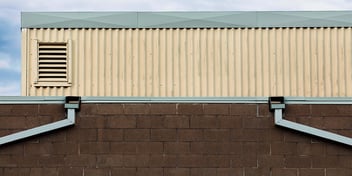- Home »
- Learningcenter »
- Rafters trusses pros cons
Rafters vs Trusses: What Are The Pros and Cons of Each?
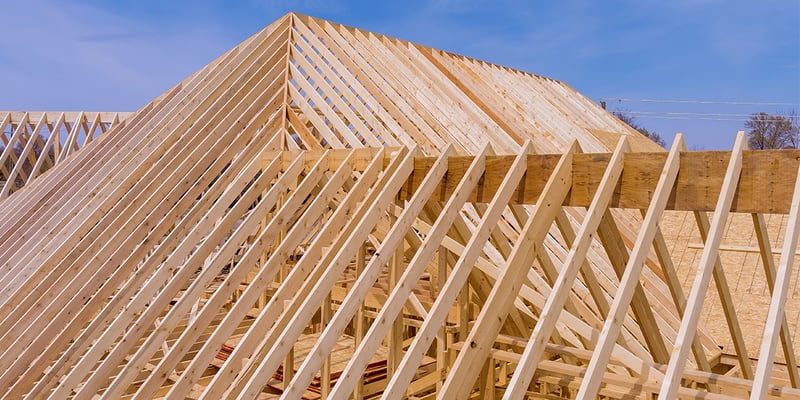
When you're building a new home, your roofing design might not be the first thing that crosses your mind. In reality, though, how you design your roof is one of the most important decisions you'll make, as it impacts the home's exterior aesthetics and the highly-practical concern regarding how your roof will protect your home from the elements.
Roof rafters and roof trusses are two of the primary roof framing methods. Each has its benefits and drawbacks, and it's worth taking the time to understand the differences before selecting.
Let's dive deeper into the differences between rafters and trusses and each framing option's unique pros and cons. With this guide, you'll gain valuable knowledge about which method is more appropriate for your project.
What Are Rafters?
Rafters are an essential part of the traditional method for framing roofs. Extending from the ridge or hip to the wall plate, eave, or downslope perimeter, they help to support the shingles, roof deck, and more. The rafters are a series of wooden beams that serve as sloped structural pieces.
Rafters are the tried and true method for framing a roof. When using rafters for roof framing, professional roofers cut all of the lumber on the job site. Ceiling joists secure the rafters and the exterior walls, and the ridge board or ridge beam helps to support the high points of the rafters.
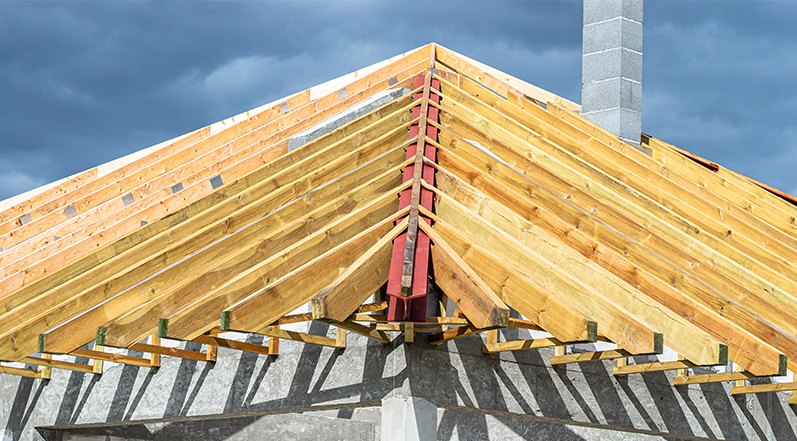
As a side note, it's worth understanding that ridge beams and ridge boards aren't two different terms for the same thing. Depending on the slope of your roof, you might be required by building codes to have a ridge beam rather than a ridge board. These components tend to lengthen the lifespan of the rafters and offer more stability than ridge boards.
Ridge boards are also frequently used when an individual wants to increase attic space in the home or incorporate vaulted ceilings into the building.
On the other hand, ridge boards are non-structural boards that aren't nearly as capable of carrying loads as ridge beams. They are commonly used for roofs with slopes between 3/12 and 12/12 and serve as a connecting point between joists. Additionally, they help transfer the load to the external walls through the joists and assist with the spacing of the rafters.
Unlike ridge beams, bridge boards require collar ties, a tension tie that helps prevent rafter separation from the ridge when the roof is experiencing unbalanced loads.
What Are Trusses?
Roof trusses perform a similar function as roof rafters, but they are both made and structured differently than rafters.
The material used for trusses is lightweight and prefabricated. Rather than being cut and constructed on-site, it's made in a factory and delivered directly to the construction site.
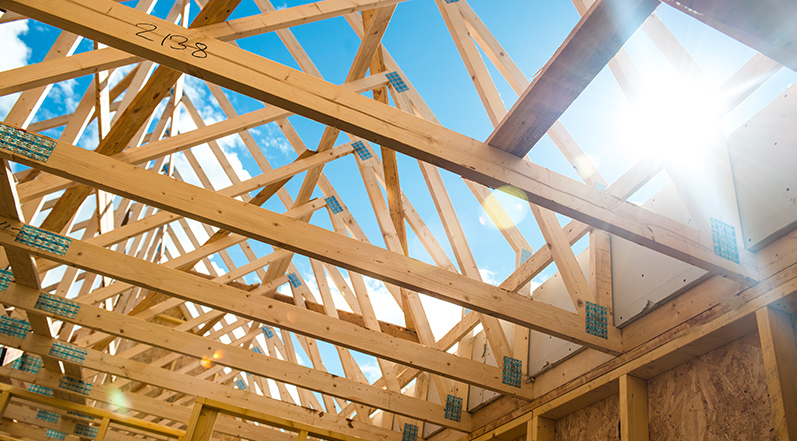
Trusses feature chords on both the top and bottom rather than the stick framing pattern of rafters. They are arranged to form a web that offers broader load distribution to outside walls.
A wide variety of roof trusses are available with different webbing patterns, which can serve numerous uses. The King Post truss is the most basic roof truss, meaning it doesn't require as much material and therefore is less expensive than other options.
Whether you're looking for a contractor for your new build or need to replace the roof of your existing home, be sure to check out our guide on what to look for in a roofing estimate.
Rafters Vs. Trusses: What's the Difference?
In the United States, the two primary roof-framing methods are stick-framed roofs and truss-framed roofs. Stick-framed roofs utilize a series of individual rafters that span from the ridge to the top of the exterior wall. On the other hand, truss-framed roofs are built from premade truss units that are triangular-shaped and form a webbed pattern.
While both rafters and trusses are used for roof framing, there are essential differences between these two structural components that you'll want to be aware of before making a choice one way or the other.
Trusses have become more commonly used by homeowners in the U.S. One of the primary motivations for this is that they offer excellent durability while being cost-effective.
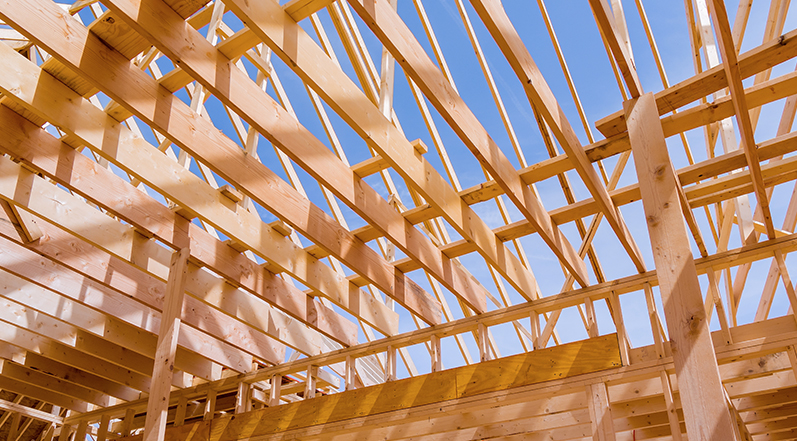
Rafters, on the other hand, offer individuals designing their own homes more opportunities for creativity in the design.
One of the primary benefits of trusses we'll discuss later in the article, is that they are typically prefabricated off-site and provide support via a triangular webbing pattern. Rafters are typically cut and constructed on-site and are spaced at regular intervals and linked by purlins (horizontal beams.) This technique makes installation quicker and can also help to keep costs down for the entire project.
Another difference between these two framing components worth understanding is the type of material. Trusses usually use 2x4s, while rafters are commonly made using 2x8s, 2x10x, and 2x12s. Since trusses aren't constructed out of material that is nearly as strong as that typically used for rafters, more material is used overall.
Are you replacing the roof on an existing home? This article covers everything you should look for when getting a new roof.
The Pros and Cons of Rafters
Even though trusses have become increasingly popular in the last fifty years or so, there are still some advantages to rafters that are worth considering.
At the same time, many people building a new home might find that the benefits of trusses outweigh the benefits of rafters.
Advantages of Rafters
It is a tried-and-true, traditional method; you don't want to write rafters off without considering some of their advantages.
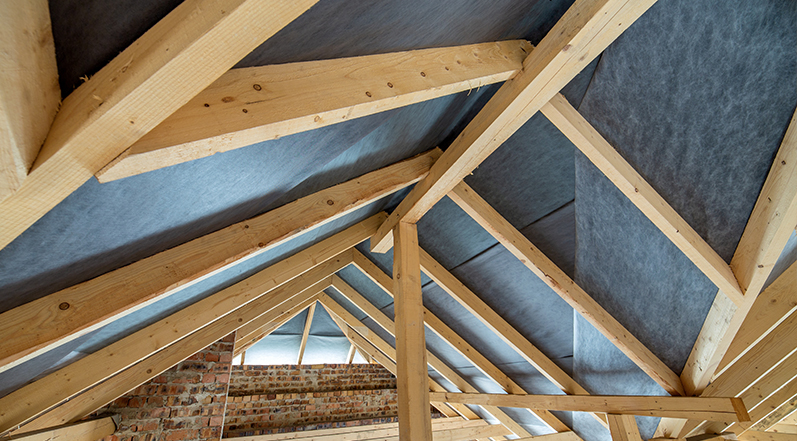
Rafters:
- ● Can be used for any building location: Since rafters are typically built on-site, they can be used on just about any building site. If you're building a home in a remote area or an otherwise hard-to-reach spot, rafters avoid many complications associated with delivering trusses.
- ● Don't require as much front-loaded planning: Though trusses tend to go up faster than rafters, ordering them and having them built off-site takes advanced planning. Rafters can therefore be more appropriate for builds that are on a tight timeline.
- ● Allow more space in the home: One of the significant benefits of rafters is that they provide more space in the house. It's possible to leave the option open to convert the attic into a living space down the road or create a vaulted ceiling on the lower floor.
- ● Insulation: Proper attic insulation is key to keeping energy costs down and maintaining a comfortable living space. Installing adequate insulation is much easier with rafters than with trusses.
Disadvantages of Rafters
Of course, there are some important reasons that people have increasingly been shifting away from rafters and toward trusses.
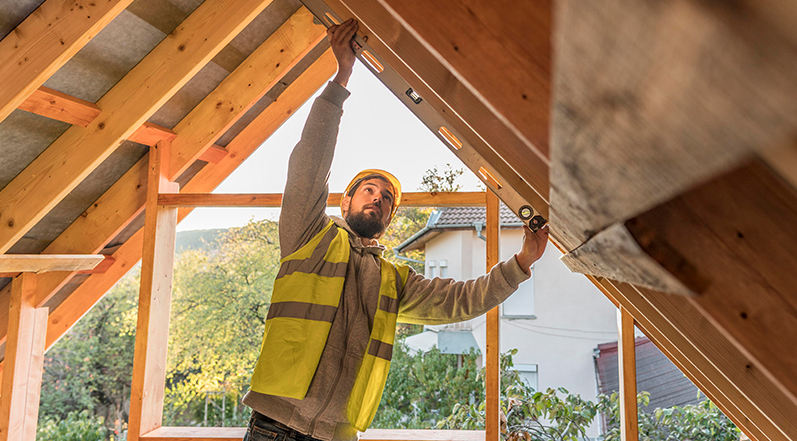
Before we look at the pros and cons of trusses, let's go over some of the drawbacks of rafters.
- ● Can take longer to build than trusses: Rafters don't require any prior planning, but this also means that they are more time-consuming on the ground. While trusses are constructed ahead of time, they go up much more quickly, which can benefit you when you're concerned about weather or other factors impacting the build.
- ● Are often more expensive than trusses: Once you factor in the cost of materials and labor, you'll usually find that rafters are more costly than trusses. For individuals on a budget, trusses are often the more affordable option.
- ● Requires a pro: Increasingly, contractors are installing trusses rather than rafters as they become more popular; you won't just want any roofing contractor– you'll want to find professionals who have the necessary experience and skill to install rafters properly. Additionally, rafters are typically not considered an accessible DIY project, while trusses are available in DIY kits.
Do you need to worry about framing when getting a new roof on an existing home? This guide teaches you what to expect when getting a new roof.
The Pros and Cons of Trusses
Trusses are increasingly popular in the United States because of their quick installation and typically cheaper price tag when compared to rafters. At the same time, there might be better choices for some projects.
Advantages of Trusses
Trusses might be the right choice for your home if you prioritize cost and budget and the home site is easily accessible.
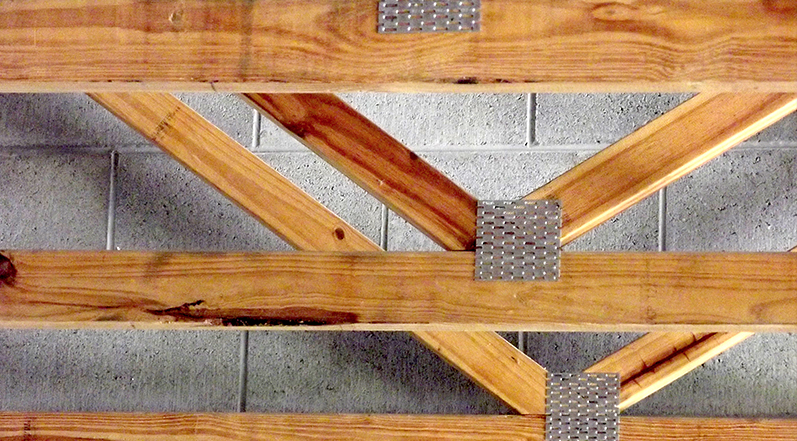
Additionally, trusses could be the better option if you aren't concerned about having maximum design flexibility from the get-go or down the road.
- ● Usually more cost-effective than rafters: In many cases, purchasing a prefabricated truss packing is much less expensive than installing rafters. That being said, it's essential to factor in the additional costs of trusses, including shipping costs and potentially renting a boom or crane.
- ● Allows for greater span and provides superior strength: In addition to the fact that they can be more affordable, another reason that trusses are becoming popular is that they offer excellent span and strength. Rafter spans typically can only reach about thirty feet, while trusses can reach up to sixty feet. The structural strength that trusses offer is due to the webbing pattern of their construction.
- ● Prefabrication reduces mistakes and increases accuracy: There can be less room for mistakes when trusses are built in a controlled environment. The potential for human error is reduced because the components are digitally measured and cut rather than cut by hand.
- ● Allows for faster framing once the materials are on-site: Though you have to plan ahead to use trusses, the framing process is much quicker with trusses than with rafters once the materials are on-site. If you're concerned about poor weather interrupting construction or are pressed for time otherwise, this might be enough reason to lean toward trusses alone.
- ● DIY Friendly: Though framing a roof isn't a great beginner DIY project for anyone, truss packages come with specific instructions concerning spacing and fastening. Since they are prefabricated, trusses are more DIY friendly than rafters. You can use this roof truss calculator for accurate estimation.
Disadvantages of Trusses
While trusses provide an affordable option for many individuals building their own homes, that doesn't mean there aren't any downsides.
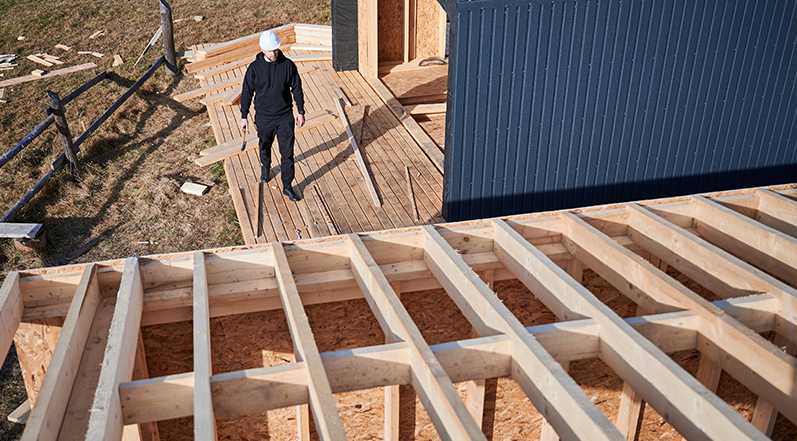
Let's look at the cons of roof trusses to ensure that you have all the information you need to make the right choice.
- ● Less flexibility than rafters: You don't have nearly as many options when you use trusses to frame your roof rather than rafters. Once trusses are installed, there isn't much room for alterations or modifications. If design flexibility is a priority, rafters might be the better choice.
- ● Less space: While rafters leave the option open to do an attic conversion, create a vaulted roof, or make other modifications, trusses aren't nearly as flexible in this way.
- ● Requires delivery and associated shipping costs: How affordable trusses are will depend partly on where your build site is and how accessible it is. Assembled trusses are enormous and heavy, so they need to be delivered on a semi.
- ● Difficult if not impossible for hard-to-reach sites: Trusses might be an excellent choice for a completely cleared home site with road access, but if you're building in a remote or hard-to-reach location, it's going to be difficult if not impossible to have assembled trusses delivered.
Of course, choosing between rafters and trusses is only one of the many decisions you'll need to make when installing a new roof. You'll also have to think about the roofing material you want to use, the budget you'll want to stick to, finding the right roofing contractor, and more.
Though it can be a big research project, it's worth exploring all your options when framing and installing a new roof. Depending on your needs, you might find that some choices are much more appealing and appropriate.
If you're in the Atlanta area and need to install a new roof, replace an existing roof, or are looking for an experienced company to perform roof repairs, you've come to the right place.
Our team at Colony Roofers is hand selected for integrity, experience, skill, and hard work. If your goal is finding the point where quality meets affordable, Colony Roofers is the roofing company for you.
Interested in getting an estimate, or do you have a few questions? Don't hesitate to reach out today!
 Call (678) 365-3138
Call (678) 365-3138


